A short-lived settlement provides an unparalleled view of bronze age life in eastern england.

Some 3,000 years ago, throughout Britain, broad changes in settlement patterns, society, and technology were slowly bringing an end to what archaeologists call the British Bronze Age (2500–800 b.c.). In the coming centuries, the Iron Age would emerge. But in the wetlands of East Anglia, referred to as the Fenland, a transformation of another sort, both more conspicuous and tangible, was taking place. Climate change was gradually causing water levels to rise, and, as marshland increased, vital dry land became scarcer. The solution for one small settlement was to build its homes on pylons directly above the water. However, by some twist of fate, shortly after the new settlement was built, it was destroyed by fire—whether deliberate or accidental is not known. The conflagration caused the houses and their contents to collapse into the shallow river below. There, extraordinary circumstances led to their preservation and eventual discovery. Recent excavations of this Late Bronze Age village are providing archaeologists with as yet unmatched insights into the lifestyle and day-to-day lives of Britons three millennia ago. It is considered one of the most important discoveries in the history of British archaeology.
The site, called Must Farm, is named after and located in a modern-day clay quarry outside the town of Peterborough.Until now, much of what is known about Bronze Age Britain has stemmed from investigations of specialized sites such as burial mounds, megalithic monuments, or ritual deposits of bronze weapons. While these types of finds have value, they offer archaeologists little information about ordinary people and everyday life. Even when Bronze Age houses and settlements have been identified, they have yielded scant material evidence.
Esta historia es de la edición January/February 2017 de Archaeology.
Comience su prueba gratuita de Magzter GOLD de 7 días para acceder a miles de historias premium seleccionadas y a más de 9,000 revistas y periódicos.
Ya eres suscriptor ? Conectar
Esta historia es de la edición January/February 2017 de Archaeology.
Comience su prueba gratuita de Magzter GOLD de 7 días para acceder a miles de historias premium seleccionadas y a más de 9,000 revistas y periódicos.
Ya eres suscriptor? Conectar
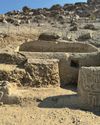
ORIGINS OF PERUVIAN RELIGION
While investigating looters' holes at the site of La Otra Banda in northern Peru's Zaña Valley, archaeologist Luis A. Muro Ynoñán of the Field Museum and the Pontifical Catholic University of Peru spotted carved blocks around seven feet below the surface.
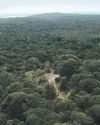
ISLAND OF FREEDOM
Many of the enslaved Africans sent to Brazil beginning in 1549 were from what is now Angola, where one of the most widely spoken languages was Kimbundu.

NAZCA GHOST GLYPHS
From the 1940s to the early 2000s, geoglyphs were discovered in the Nazca Desert of southern Peru depicting animals, humans, and other figures at the rate of 1.5 per year.

COLONIAL COMPANIONS
The ancestry of dogs in seventeenth-century Jamestown offers a window into social dynamics between Indigenous people and early colonists.

BAD MOON RISING
The British Museum houses around 130,000 clay tablets from ancient Mesopotamia written in cuneiform script between 3200 B.C. and the first century A.D.
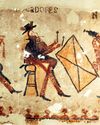
DANCING DAYS OF THE MAYA
In the mountains of Guatemala, murals depict elaborate performances combining Catholic and Indigenous traditions
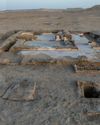
LOST GREEK TRAGEDIES REVIVED
How a scholar discovered passages from a great Athenian playwright on a discarded papyrus

Medieval England's Coveted Cargo
Archaeologists dive on a ship laden with marble bound for the kingdom's grandest cathedrals
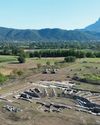
Unearthing a Forgotten Roman Town
A stretch of Italian farmland concealed one of the small cities that powered the empire
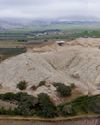
TOP 10 DISCOVERIES OF 2024
ARCHAEOLOGY magazine reveals the year's most exciting finds